Have you ever struggled with pesky insects ruining your beautiful garden or invading your home? It can be frustrating and exhausting to constantly battle against these unwanted pests. However, there may be a natural and effective solution – repellent plants. These plants have unique properties and scents that can keep insects and other pests at bay. But how do you choose and maintain these plants for maximum effectiveness? This comprehensive guide will walk you through the process step-by-step, from selecting the right plants for your area to monitoring their effectiveness. Say goodbye to harmful pesticides and hello to a thriving, natural garden with the help of repellent plants.
Why Repellent Plants Are Important
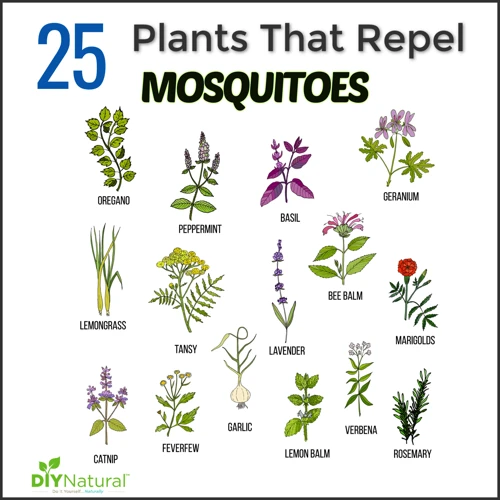
It’s amazing how certain plants can help us solve many problems, including pests that can destroy our gardens. Repellent plants are one of the best solutions to keep pests like moles, mosquitoes, and other insects away from your garden without using harmful chemicals. In this section of the article, we will discuss the significant role of repellent plants in pest control and how they work to protect your garden. We will also talk about the advantages of using repellent plants and how to choose the right repellent plants for your specific needs. If you’re looking for a natural and safe alternative to repel pests, keep reading to learn more about these fascinating plants. To learn more about the best repellent plants for moles, you can follow this link.
How Repellent Plants Work
Repellent plants are plants that release scents and oils that are unpleasant to pests like moles, mosquitoes, and other insects, as well as rodents like mice and rats. These plants have natural chemicals that they produce to ward off predators and pests, and these same chemicals can be used as a natural repellent in your garden.
Different types of pests find different smells and chemicals unpleasant, so one repellent plant may not work on every type of pest. For example, mole repellent plants may not be as effective at deterring mosquitoes. Similarly, what works in one area may not work in another, since different pests are more prominent in different environments.
However, repellent plants work by using natural substances to create an environment that pests find unappealing. When pests come into contact with these chemicals, they are either repelled or deterred from returning to the area.
Some of the most common repellent plants include herbs such as peppermint, lavender, rosemary, and basil, while marigolds, citronella grass, and lemongrass are often used to repel mosquitoes. Mole repellent plants can include castor bean plants, daffodils, and alliums.
It is important to note that while repellent plants can be effective, they are not a foolproof solution for pest control. If your pest problem is severe or persistent, you may need to use additional methods like traps or pesticides.
Here are some key points:
| What are repellent plants? | Plants that release scents and oils that are unpleasant to pests like moles, mosquitoes, and other insects, as well as rodents like mice and rats. |
| How do repellent plants work? | They use natural chemicals to create an environment that pests find unappealing, either repelling or deterring them from returning to the area. |
| Which pests do they work on? | Different types of pests find different smells and chemicals unpleasant, so one repellent plant may not work on every type of pest. |
| What are some common repellent plants? | Peppermint, lavender, rosemary, basil, marigolds, citronella grass, lemongrass, castor bean plants, daffodils, and alliums. |
| Are repellent plants a foolproof solution for pest control? | No, if your pest problem is severe or persistent, you may need to use additional methods like traps or pesticides. |
If you want to know more about which repellent plants work best for deterring moles, you can read our article on top 5 mole repellent plants.
Benefits of Repellent Plants
Repellent plants not only offer a natural and eco-friendly way to keep pests at bay but also have numerous other benefits. Here are some of the benefits of having repellent plants in your garden:
| Benefits of Repellent Plants |
|---|
| 1. Natural pest control without the use of harmful chemicals |
| 2. Attractive addition to any garden or landscape |
| 3. Can improve air quality and reduce pollution |
| 4. Can attract beneficial insects and wildlife to the garden |
| 5. Some repellent plants have medicinal properties and can be used for healing purposes |
| 6. Can provide privacy and shade to the garden |
| 7. Can be grown in pots, making them a great option for small gardens or apartments |
Whether you’re looking to keep pesky pests like moles at bay, or just want to create a beautiful and natural garden, repellent plants can provide all of these benefits. So, it’s totally worth to consider planting them in your outdoor area. For instance, if you want to keep moles away from your garden, there are specific repellent plants you can use. To know more about this topic, you can read our article on benefits of repellent plants for mole control.
Choosing the Right Repellent Plants
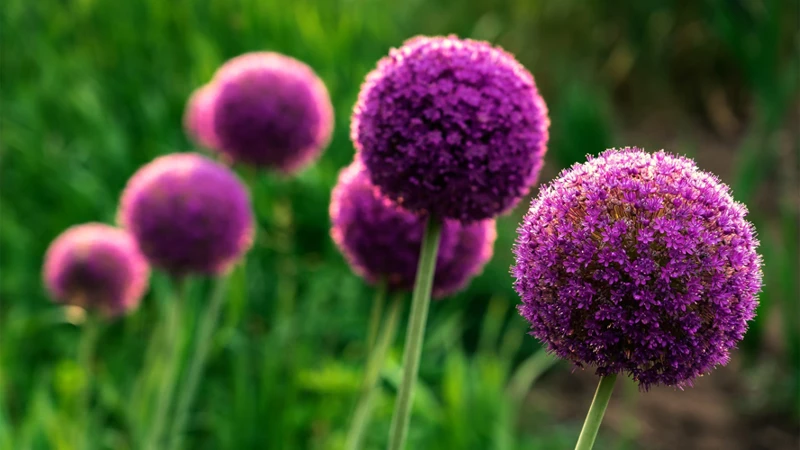
When it comes to repelling pests from your garden, choosing the right repellent plants can be a game-changer. Not all plants are created equal, and some may work better than others depending on the type of pest you’re trying to keep away. In this section, we’ll discuss best practices for selecting and purchasing repellent plants so you can make the most out of your pest control efforts. If you’re interested in learning more about how repellent plants can help with mole control, check out our article on the benefits of repellent plants for mole control.
Best Repellent Plants for Your Area
When it comes to choosing the best repellent plants for your area, it is important to consider the local climate and the pests that are common in your region. Here are some options to consider:
- Lavender: This fragrant plant is known to repel mosquitoes, fleas, and moths. It grows well in sunny, dry areas, making it a popular choice for gardens in Mediterranean climates.
- Citronella: This plant is commonly used in commercial mosquito repellents due to its strong, lemony scent. It does best in warm, humid climates and requires regular watering.
- Pennyroyal: This low-growing herb is a natural repellent for fleas, ticks, and mosquitoes. It prefers moist, shaded areas and is easy to grow from seed.
- Marigolds: These brightly colored flowers have a distinct smell that can repel mosquitoes, flies, and other insects. They are hardy and easy to grow, making them a popular choice for garden borders.
- Mint: This herb is a natural repellent for ants, mice, and mosquitoes. It grows easily in most climates and can be planted in containers to prevent it from spreading too much.
These are just a few examples of the many repellent plants that are available. It is important to research which plants are best suited for your specific area and needs. Mole repelling plants are also available for those who are dealing with this pesky pest in their garden.
How to Buy Healthy Plants
When buying repellent plants, it is important to select healthy plants to ensure maximum effectiveness. Here are some guidelines for choosing healthy plants:
| Tip | Description |
|---|---|
| Inspect the leaves and stems | Make sure there are no signs of discoloration, spots, or wilting. Leaves should be green and sturdy. |
| Check the roots | Look for white, healthy roots. Avoid plants with brown or black roots, as they could be diseased. |
| Look for pests | Check for any signs of insects or other pests on the plant. Avoid plants with pest infestations. |
| Buy from a reputable seller | Choose a seller who has a good reputation for selling healthy plants. If buying online, read reviews and check their return policy. |
| Buy appropriate size | Make sure to buy plants that are appropriate for your garden or container size. Smaller plants are easier to transplant and establish, but larger plants provide more immediate impact and coverage. |
By following these tips, you can ensure that the repellent plants you buy are healthy and ready to work their magic in keeping pests away from your garden.
Planting Repellent Plants
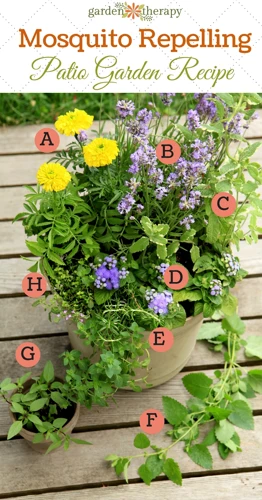
Planting repellent plants is an essential step in creating an effective barrier against pests in your garden. By choosing the right plants and planting them correctly, you can ensure that the plants will reach their full potential in repelling unwanted insects and animals. Proper planting techniques will also result in healthier and more robust plants that can continue to protect your garden for years to come. In the next sections, we’ll discuss how to plant repellent plants and where to place them for maximum effectiveness. For those who are dealing with mole problems, check out our guide on DIY repellent plants to deter moles or learn how to use repellent plants to keep moles away.
How to Plant Repellent Plants
Planting Repellent Plants: When planting repellent plants, it’s important to follow a few key steps to ensure their success. Here are the steps to follow:
| Step | Description |
|---|---|
| 1 | Choose a suitable spot: Choose a spot that gets plenty of sunlight and has well-draining soil. Check the specific planting requirements for the type of repellent plant you have purchased. |
| 2 | Prep the soil: Remove any weeds or debris from the area where you plan to plant the repellent plants. Loosen the soil to a depth of 6-12 inches to create a good planting environment for the roots. |
| 3 | Plant your repellent plants: Dig a hole that is slightly larger than the root ball of your plant. Place the plant in the hole and backfill with soil. Make sure the plant is at the same level in the ground as it was in its original container or nursery pot. |
| 4 | Water your plants: Water your plants thoroughly after planting. This will help settle the soil and remove any air pockets around the roots. |
| 5 | Add mulch: Add a layer of mulch around the base of your plants to help regulate the soil temperature and retain moisture. |
It’s important to give your new plants regular watering and care as they establish themselves. This will help ensure they thrive in their new environment. For more information on how to plant repellent plants, check out our guide on DIY Repellent Plants for Moles.
Placement of Repellent Plants in Your Garden
When it comes to the placement of repellent plants in your garden, there are a few things to keep in mind to ensure maximum effectiveness. Here are some tips to follow:
- Consider the layout of your garden: When deciding where to plant your repellent plants, take into account the layout of your garden. Think about where pests might enter and travel through your garden, and place plants accordingly. If you have a particular area where pests are a problem, focus on planting repellent plants in that area.
- Plant in strategic locations: Repellent plants are most effective when they are placed strategically around your garden. Consider planting them near entry points such as doors and windows or around the perimeter of your garden. You can also plant them in clusters near plants that are particularly susceptible to pests.
- Use companion planting: Some plants have natural repellent properties, which make them ideal for planting alongside other plants. Consider using companion planting to maximize the effectiveness of your repellent plants. For example, planting marigolds alongside vegetables can help repel pests.
- Try interplanting: Interspersing repellent plants throughout your garden can also be effective. This can help to create a more diverse environment that is less attractive to pests. Intermingling plants can also help to confuse pests and make it more difficult for them to find their target plants.
- Don’t forget about containers: Repellent plants can also be grown in containers, which makes them ideal for patios and balconies. You can also move containers around your garden to target specific areas where pests are a problem.
By following these placement tips, you can ensure that your repellent plants are placed in the most effective locations throughout your garden, helping to keep pests at bay.
Maintaining Repellent Plants
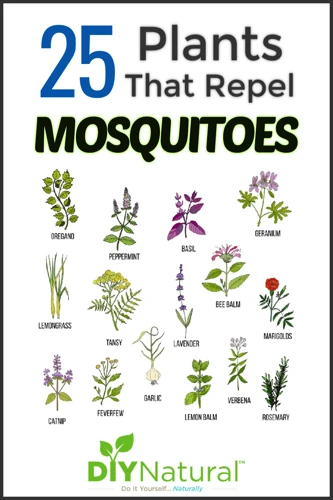
Keeping the repellent plants in top condition is crucial to ensure their effectiveness. Neglecting their maintenance can result in weakened plants that can be easily invaded by pests. It is essential to understand the watering, fertilizing, pruning, trimming, and protection from cold weather requirements of your plants. Providing the right care will not only help your plants grow and thrive but also increase their potency to repel pests. Let’s dive deeper into the maintenance of these plants and how to keep them healthy.
Watering and Fertilizing Repellent Plants
Watering and fertilizing are two important aspects of maintaining repellent plants, ensuring their optimal growth and effectiveness. Here are some tips for watering and fertilizing your repellent plants:
- Watering: Repellent plants require adequate watering to grow and remain healthy, but it’s important not to over-water them. Over-watering can lead to root rot and other fungal diseases that can harm the plant. To determine the right amount of water needed for your repellent plants, it’s important to be familiar with their specific watering needs. For example, some plants may require more frequent watering than others. Additionally, make sure to water your plants in the morning or evening when temperatures are cooler, as watering during the heat of the day can cause the water to evaporate before it has a chance to reach the roots.
- Fertilizing: Repellent plants typically do not require heavy fertilization, but they will benefit from some gentle feeding every now and then. Fertilizers rich in nitrogen and potassium can improve the overall health of the plant and enhance its ability to repel pests. When fertilizing your plants, follow the manufacturer’s instructions for the recommended amount as over-fertilizing can cause the excessive growth of foliage, and reduce the amount of essential oils and compounds that make the plant repellant.
By maintaining a consistent watering and fertilizing schedule, you can help your repellent plants thrive, and in turn maximize their ability to repel pests away from your garden or home.
Pruning and Trimming Repellent Plants
Pruning and trimming are important steps in maintaining and caring for your repellent plants. This helps to keep your plants healthy and ensure that they are working effectively. Here are some tips to keep in mind when it comes to pruning and trimming your repellent plants:
| Tip #1: | Know when to prune |
| Explanation: | Pruning should be done during the dormant period or when the plant is not actively growing. This will help to prevent damage to the plant and ensure that it continues to grow strong. |
| Tip #2: | Use the right tools |
| Explanation: | Make sure to use clean and sharp pruning shears or scissors. This will help to prevent the spread of disease and ensure that you make clean cuts that will not damage the plant. |
| Tip #3: | Know what to prune |
| Explanation: | When pruning, it’s important to remove any dead, damaged, or diseased plant material. This will help to keep the plant healthy and prevent the spread of disease. You can also prune to shape the plant and remove any unwanted growth. |
| Tip #4: | Trim regularly |
| Explanation: | Trimming on a regular basis, especially during the growing season, will help to promote more growth and keep the plant healthy. This can also prevent the plant from becoming overgrown and taking up too much space in your garden. |
By following these tips for pruning and trimming your repellent plants, you can help to ensure that they stay healthy and effective at repelling pests.
Protecting Repellent Plants from Cold Weather
When it comes to protecting your repellent plants from cold weather, proper care and preparation is essential for their survival. Below is a table with some tips on how to ensure your plants stay healthy during the colder months:
| Action | Description |
|---|---|
| Watering | Continue watering your repellent plants regularly before freezing temperatures occur. This will help them to store enough water in their systems to survive the colder months. |
| Mulching | Once the temperature drops, mulch around the base of your repellent plants. This will help to regulate soil temperature, prevent weeds from sprouting, and retain moisture in the soil. Use a layer of about 2-3 inches of organic material such as leaves, hay, or straw. |
| Pruning | Before the first frost, prune any damaged, dead or diseased parts of the plant. This will help to prevent the spread of disease, fungus, or pests, and encourage the plant to focus on its healthier parts during the colder months. |
| Protective coverings/tents | If you live in an area that experiences extreme cold or frost, consider covering your repellent plants with blankets, frost cloths, or tents. This will help to create a protective barrier and trap warm air inside. Make sure you secure the coverings to prevent them from getting blown away by wind. |
| Bring plants indoors | If you grow your repellent plants in containers, consider bringing them indoors when the temperature drops below freezing. Make sure they are placed near a sunny window and continue to water them as needed. |
By taking these steps, you can ensure that your repellent plants remain healthy and effective even during the coldest months of the year. Remember, it is always better to be prepared than to deal with the consequences of neglecting your plants.
Using Repellent Plants in Combination with Other Control Methods
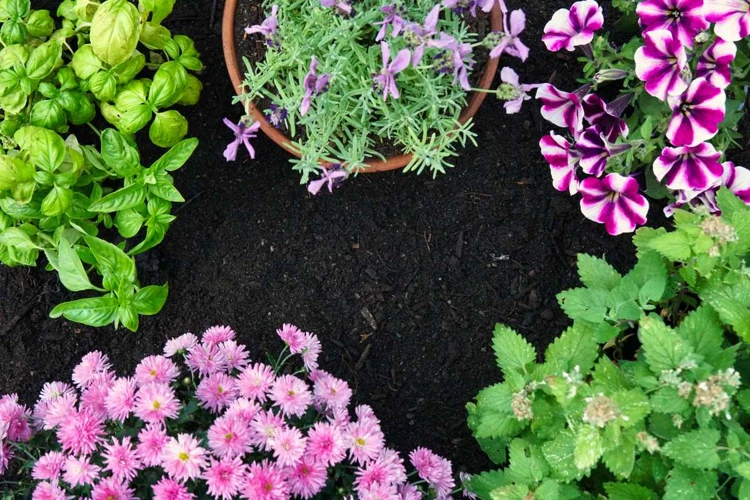
Garden pests can be quite challenging to control, and sometimes, planting repellent plants is not enough. If you’re dealing with a severe pest problem, you might need to use other control methods in combination with repellent plants. In this section, we’ll explore how you can use repellent plants in conjunction with other techniques to control pests effectively. By implementing a combination of strategies, you can create a pest-free garden and ensure that your plants thrive.
Companion Planting with Repellent Plants
Companion planting involves planting different types of plants together to help each other grow and provide mutual benefits. In the case of using repellent plants, companion planting can be a useful tool in controlling pests in your garden.
Benefits of Companion Planting with Repellent Plants
Companion planting with repellent plants can have several benefits, including:
| Benefit | Description |
| Increased pest control | Plants that have repellent properties can help deter pests from the surrounding area, reducing the likelihood of infestations and damage to other plants. |
| Better soil health | Companion planting can involve planting plants with different root systems that can help improve soil structure and nutrient availability. |
| Attracting beneficial insects | Some plants can attract beneficial insects that can help pollinate plants or control pest populations. |
Examples of Repellent Plants for Companion Planting
When choosing companion plants, it’s important to select plants that have similar growing requirements and can coexist without competing for resources. Here are some examples of repellent plants that can be used for companion planting:
| Plant | Properties and Uses | Companion Plants |
| Lavender | Repels moths, fleas, flies, and mosquitoes. Can be used in borders or as a hedge. | Rosemary, sage, thyme, marjoram, basil. |
| Catnip | Repels mosquitoes, fleas, and ticks. Can be grown in pots or borders. | Lavender, sage, rosemary, marigolds. |
| Chrysanthemums | Contains pyrethrins, a natural insecticide that repels many pests. Can be used in borders or as a container plant. | Herbs such as basil, mint, and rosemary. |
By incorporating repellent plants into your garden through companion planting, you can create a natural and effective way to control pests and keep your plants healthy.
Using Repellent Plants in Combination with Traps and Barriers
When it comes to keeping pests away from your garden, using repellent plants in combination with traps and barriers can be an effective strategy. Here are some tips on how to use these methods together:
Traps: Using traps in conjunction with repellent plants can help to target specific pests that may still find their way into your garden. For example, yellow sticky traps can be hung near plants that attract aphids or whiteflies, while pheromone traps can be used to attract and capture specific types of moths or beetles.
Barriers: Installing barriers like fences or mesh netting can physically prevent pests from entering your garden and reaching your plants. You can also use natural barriers like mulch or gravel around the base of your plants to deter pests like slugs and snails.
Plant placement: When using traps and barriers, it is important to also consider the placement of your repellent plants. Positioning them strategically around the perimeter of your garden can help to lure pests away from your plants and towards the traps or barriers.
Regular maintenance: To ensure that your traps and barriers remain effective, it is important to regularly inspect and clean them. Replace sticky traps as needed, and repair any damage to physical barriers.
Monitoring: Keep track of how well your combination of repellent plants, traps, and barriers are working by monitoring pest populations over time. Adjust or switch up your methods as needed to maintain their effectiveness.
By combining the use of repellent plants, traps, and barriers, you can create a multi-faceted approach to keep pests away from your garden and protect your plants.
Monitoring the Effectiveness of Repellent Plants
As gardeners, we invest time and effort in selecting and caring for our repellent plants. But how can we tell if they’re actually doing their job and deterring pests? Regular monitoring is essential to ensure the effectiveness of the plants and make adjustments as necessary. In this section, we’ll discuss the importance of monitoring repellent plants and provide tips on how to evaluate their performance. Let’s take a closer look at how to check if our repellent plants are really doing their job.
How to Check if Repellent Plants are Working
To determine if repellent plants are working effectively, there are a few key steps to follow:
- Observe pest activity: Take note of the level of pest activity in the area where the repellent plants are planted. If you notice a significant decrease in the number of pests or damage caused by them, it’s a good sign that the repellent plants are doing their job.
- Inspect the plants: Check the plants themselves for any signs of pest damage. If the plants appear healthy and without damage, it could mean that they are effectively repelling pests.
- Re-apply repellent: If you have used a topical repellent on the plants, follow the instructions for re-application. If the repellent is still working effectively, you should notice little to no pest activity after application.
- Monitor neighboring plants: Pay attention to neighboring plants as well. If there are other plants nearby that are still being damaged by pests, it may indicate that the repellent plants are not working effectively.
- Use additional control methods: If you are still seeing a significant amount of pest activity despite the presence of repellent plants, it may be necessary to use additional control methods, such as traps or barriers, in combination with the repellent plants to achieve maximum effectiveness.
By following these steps, you can determine whether your repellent plants are working as intended and take additional measures if necessary to keep your plants and garden thriving.
What to Do if Repellent Plants are Not Working
When using repellent plants, it is possible that they may not work as expected. If this happens, it is important to take action to address the problem. Here are some steps you can take if your repellent plants are not working:
| Step | Action |
|---|---|
| Step 1 | Identify the problem: It is important to determine what is causing the repellent plants to be ineffective. Look for signs of insect or animal infestations or damage to the plants. |
| Step 2 | Consider alternative control methods: If the repellent plants are not working, it may be necessary to use other control methods such as traps or barriers. |
| Step 3 | Consult with an expert: If you are unsure about how to address the problem, consider consulting with a gardening expert or pest control professional for advice. |
| Step 4 | Replant with different species: If the problem cannot be resolved, consider replanting with different species of repellent plants or non-repellent plants that are better suited to your area. |
Taking these steps can help address any issues with ineffective repellent plants and ensure that your garden remains healthy and pest-free.
Conclusion
In conclusion, maintaining and caring for repellent plants is an effective and natural way to control pests in your garden. By choosing the right plants for your area and properly planting and maintaining them, you can enjoy the benefits of natural pest control without using harmful chemicals.
It is important to remember that while repellent plants can be a helpful addition to your pest control arsenal, they should not be relied upon as the sole method of control. It is best to use repellent plants in combination with other methods such as traps, barriers, and companion planting.
Regular monitoring of the effectiveness of your repellent plants is also important. If you notice that they are not working as well as they should be, it may be time to reassess your approach and try different methods.
In the end, maintaining and caring for repellent plants requires dedication and effort, but the rewards are well worth it. You can enjoy a beautiful, pest-free garden without harming the environment or putting your health at risk. So, consider adding some repellent plants to your garden today and enjoy the benefits of natural pest control for years to come.
Frequently Asked Questions
Can I use repellent plants indoors?
Yes, some repellent plants like peppermint and lavender can be grown indoors to help repel indoor pests like mosquitoes and spiders.
How often do I need to water my repellent plants?
Repellent plants should be watered regularly, but the frequency will depend on the plant and the weather conditions. Make sure the soil is moist but not waterlogged.
Do repellent plants work on all pests?
No, different repellent plants are effective against different pests. It’s important to research which plants work best for the pests you’re trying to repel.
Can I use repellent plants in addition to chemical insecticides?
Yes, repellent plants can be used in combination with other pest control methods, including chemical insecticides, for maximum effectiveness.
Can I grow repellent plants from seeds?
Yes, many repellent plants can be grown from seeds. Make sure to follow the planting instructions and provide the right growing conditions for the plant.
What is companion planting?
Companion planting is the practice of planting different plants together to promote growth and repel pests. Repellent plants are often used in companion planting to help protect other plants from pests.
How do I know if my repellent plants are producing essential oils?
You can usually tell if a repellent plant is producing essential oils by rubbing the leaves and smelling them. If you smell a strong scent, the plant is likely producing essential oils.
Can I use repellent plants on my pets?
Some repellent plants like eucalyptus and lemongrass can be used on pets to repel pests like fleas and ticks. However, it’s important to dilute the essential oils and use caution when applying them to your pets.
How do I protect my repellent plants from pests?
There are several ways to protect your repellent plants from pests, including using physical barriers like netting, using insecticidal soap, and keeping the surrounding area clean and free of debris.
How do I prune my repellent plants?
To prune your repellent plants, use clean and sharp pruning shears to cut back dead or diseased branches. Make sure to prune the plant to maintain its shape and encourage new growth.







